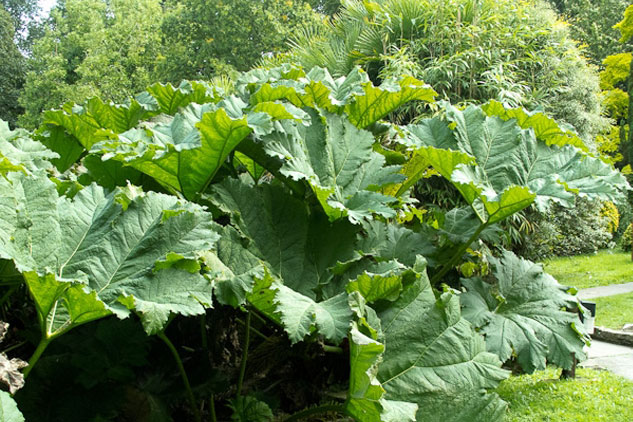Giant Rhubarb
Giant Rhubarb is a huge plant and is very popular in gardens, where it is grown beside ponds and in damp, boggy areas. It is easily recognised by its enormous leaves and spiky stems, up to 2 metres in height. Native to South America, Giant Rhubarb was originally introduced to Ireland as an ornamental plant. It is now often self-sown where long established and has naturalised in scattered locations throughout much of Ireland.

Giant Rhubarb often escapes from gardens and is sometimes planted or disposed of in the wild. Once established, it can be very invasive as it forms dense colonies, in a similar way to Japanese Knotweed, that block out native plants growing underneath it. Due to the speed of its growth and density, this invasive plant completely alters the habitats where it takes hold.
“Thanks again for helping us with the Japanese Knotweed and Horsetail at our Liverpool site. Totally reliable, you come up with the best remediation options available and get the job done.”
Gary Humphreys, Senior Engineer, Keepmoat Homes
Giant Rhubarb or Gennera Tinctoria as it is otherwise known, changes its appearance throughout its lifecycle. During the early growth period, its branches are short and stout, quickly transforming into full size leaves in summer. Each mature plant can produce up to 25,000 seeds per annum. It can also be spread through rhizome (root) relocation.